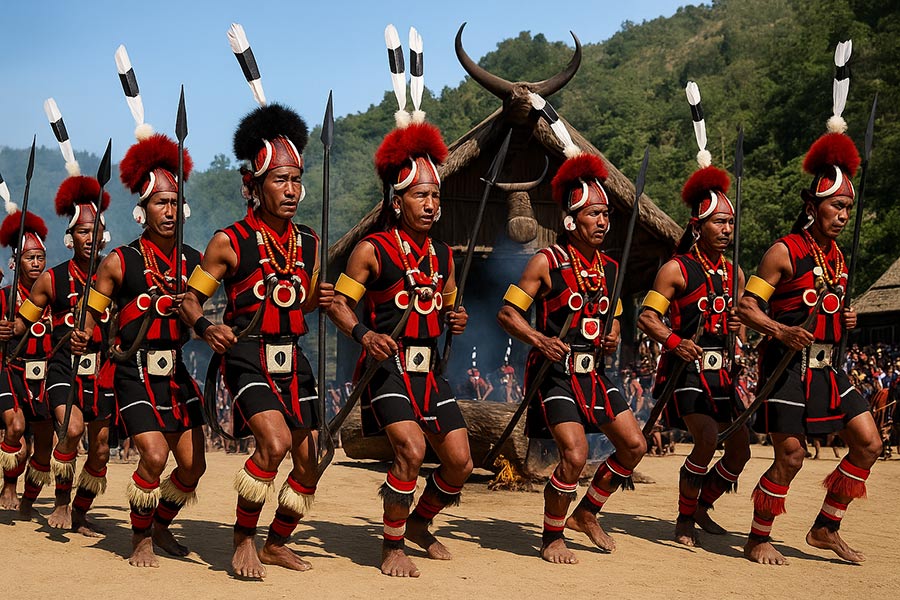
Hornbill Festival (1st – 10th December)
The Hornbill Festival is the most iconic cultural event in Nagaland, held every year from December 1st to 10th in the village-amphitheater of Kisama, just a few kilometers from Kohima. Known as the “Festival of Festivals,” it takes its name from the hornbill, a bird revered by local tribes as a symbol of abundance, beauty, and warrior spirit.
The festival was created to preserve, celebrate, and transmit the rich heritage of the 17 major Naga ethnic groups, many of which were once rooted in animist traditions and intricate ritual practices. For ten days, each tribe presents its unique identity through traditional dress, music, dance, storytelling, communal rituals, crafts, and ancestral games—offering a rare window into the diversity and pride of these mountain cultures.
At the heart of the celebration, the arena of Kisama becomes a living mosaic of color: majestic feathers, leather shields, beaded cloaks, warrior tattoos. Tribes dance in wide circles, stomping in rhythm, chanting ancient songs that invoke spirits and ancestors. Visitors are warmly welcomed into the morung, the communal tribal houses, which become spaces of sharing, storytelling, and hospitality.
Yet Hornbill is also a modern celebration: rock and folk concerts under the stars, tribal fashion shows, cooking competitions featuring bamboo-based dishes and smoked meats, traditional Naga wrestling tournaments, pig races, and hunting demonstrations. Handicraft markets brim with tribal jewelry, handwoven textiles, and carved wooden instruments.
Beyond the pageantry, the festival is a space of cultural pride and revival. After decades of marginalization, the Naga peoples reclaim their voice here—telling their story, honoring their past, and building bridges to the future.
To attend the Hornbill Festival is not just to witness an event—it is to step into the beating heart of a resilient culture, one that celebrates life, memory, and the strength of its roots.

